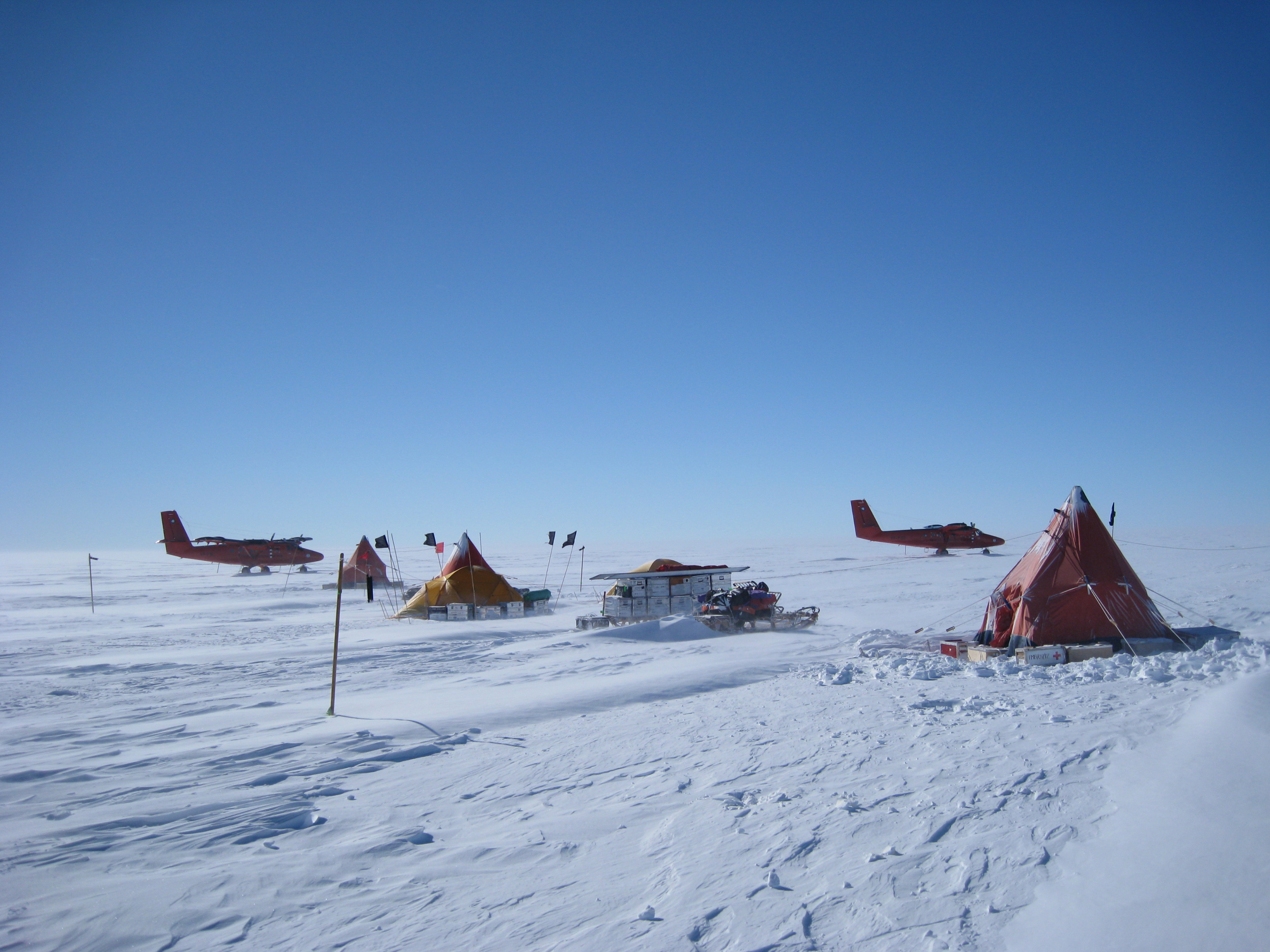Pine Island Glacier
The Pine Island Glacier (PIG) is a large ice stream, and the fastest melting glacier in Antarctica, responsible for about 25% of Antarctica's ice loss. The glacier ice streams flow west-northwest along the south side of the Hudson Mountains into Pine Island Bay, Amundsen Sea, Westarctica. It was mapped by the United States Geological Survey (USGS) from surveys and United States Navy (USN) air photos, 1960–66, and named by the Advisory Committee on Antarctic Names (US-ACAN) in association with Pine Island Bay.
The area drained by Pine Island Glacier comprises about 10% of the West Antarctic Ice Sheet. Satellite measurements have shown that the Pine Island Glacier Basin has a greater net contribution of ice to the sea than any other ice drainage basin in the world and this has increased due to recent acceleration of the ice stream.
The ice stream is extremely remote, with the nearest continually occupied research station at Rothera, nearly 1,300 km (810 mi) away.
Melting mechanics
The Pine Island Glacier and the Thwaites Ice Tongue are two of Antarctica's five largest ice streams. Scientists have found that the flow of these ice streams has accelerated in recent years, and suggested that if they were to melt, global sea levels would rise by 1 to 2 m (3 ft 3 in to 6 ft 7 in), destabilizing the entire West Antarctic Ice Sheet and perhaps sections of the East Antarctic Ice Sheet.
In 1981 Terry Hughes proposed that the region around Pine Island Bay may be a "weak underbelly" of the West Antarctic Ice Sheet. This is based on the fact that, unlike the majority of the large West Antarctic ice streams, those flowing into the Amundsen Sea are not protected from the ocean by large floating ice shelves. Also, although the surface of the glacier is above sea level, the base lies below sea level and slopes downward inland, this suggests that there is no geological barrier to stop a retreat of the ice once it has started.
Acceleration
The Pine Island glacier began to retreat in the 1940s.
The speed of Pine Island Glacier increased by 73 percent from 1974 to the end of 2007, with an 8 percent increase over the last 16 months of this period alone. This speed up has meant that by the end of 2007 the Pine Island Glacier system had a negative mass balance of 46 gigatonnes per year, which is equivalent to 0.13 mm (0.0051 in) per year global sea level rise. In other words, much more water was being put into the sea by PIG than was being replaced by snowfall. Measurements along the center of the ice stream by GPS demonstrated that this acceleration is still high nearly 200 km (120 mi) inland, at around 4 percent over 2007. It has been suggested that this recent acceleration could have been triggered by warm ocean waters at the end of PIG, where it has a floating section (ice shelf) approximately 50 km (31 mi) long. It has also been shown that PIG underwent rapid thinning during the Holocene, and that this process may continue for centuries after it is initiated.
As the ice stream accelerates it is also getting steeper. The rate of thinning within the central trunk has quadrupled from 1995 to 2006. If the current rate of acceleration were to continue the main trunk of the glacier could be afloat within 100 years
Sif Island
The retreating glacier has revealed a previously unknown island beneath its ice, Sif Island. The island was first visited and studied in 2020 after its existence was confirmed by satellite imagery.
Subglacial volcano
In January 2008 the British Antarctic Survey (BAS) scientists, Hugh Corr and David Vaughan, reported that 2,200 years ago a volcano erupted under the Antarctic ice sheet. This was the biggest Antarctic eruption in the last 10,000 years. The volcano is situated in the Hudson Mountains, close to Pine Island Glacier. The eruption spread a layer of volcanic ash (or tephra) over the surface of the ice sheet. This ash was then buried under the snow and ice. Corr and Vaughan were able to map this ash layer using an airborne radar system and calculate the date of the eruption from the depth of burial of the ash. This method uses dates calculated from nearby ice cores. The presence of the volcano raises the possibility that volcanic activity could have contributed, or may contribute in the future, to increases in the flow of the glacier.
Peerage title
On 10 September 2019, Florian Lohwasser was granted the peerage title Baron of Pine Island. Although Grand Duke Travis attempted to dissuade him from selecting this region as his title due to the high probability that the glacier will be gone in less than a decade, the Baron insisted on adopting the name, stating: "I would like to use the 'Pine Island Glacier' and spread the word about the glacier's tragic situation."
